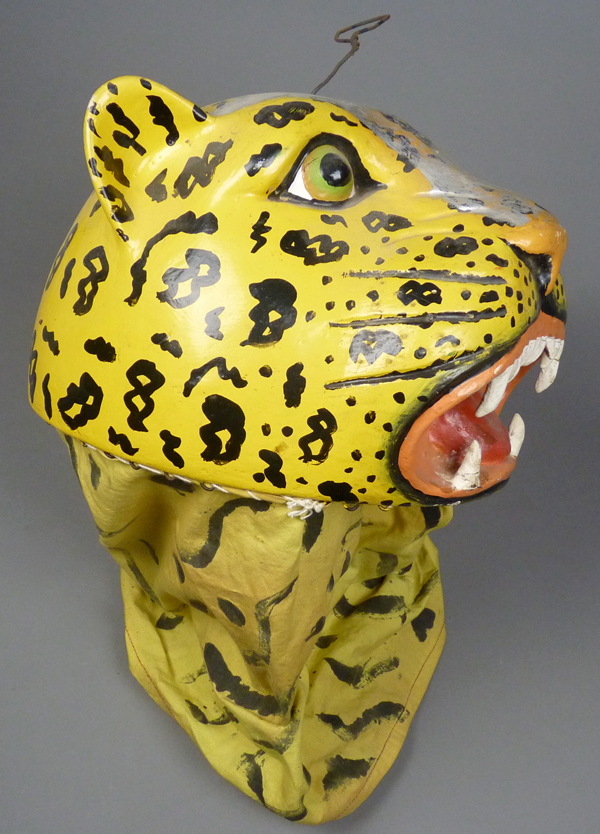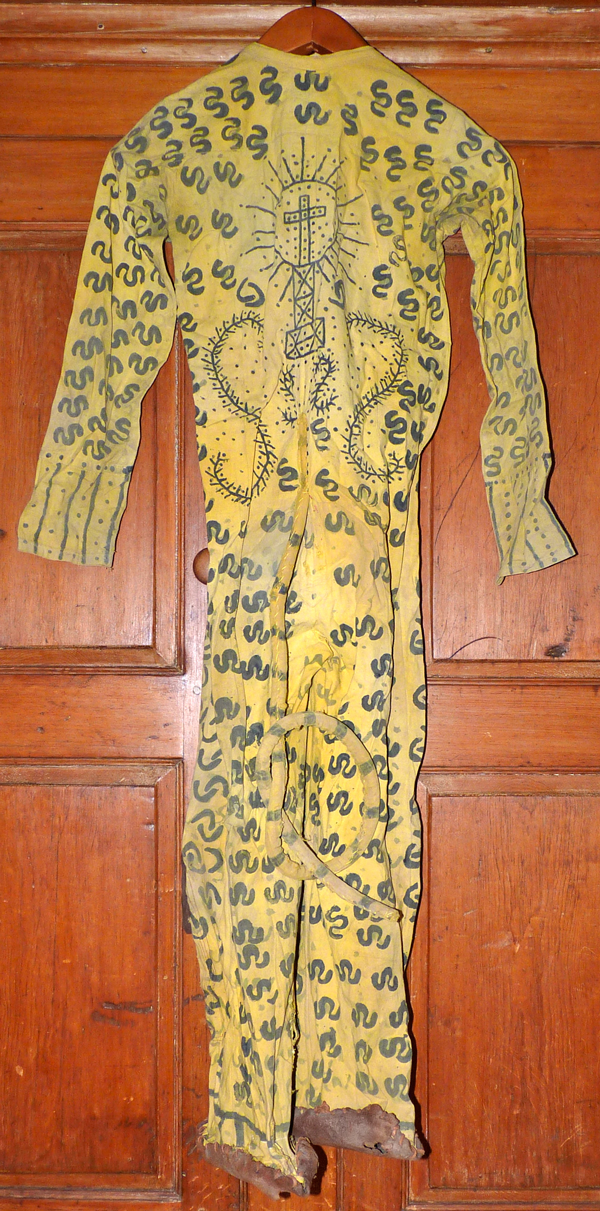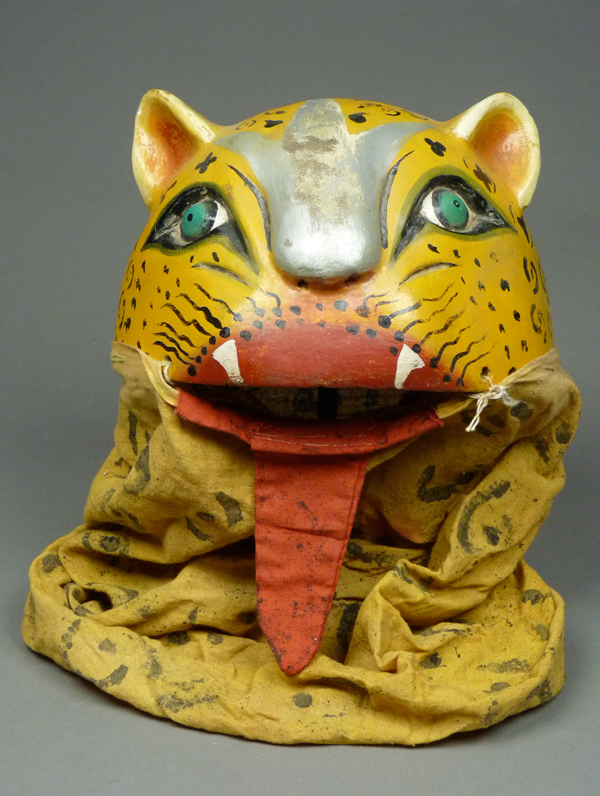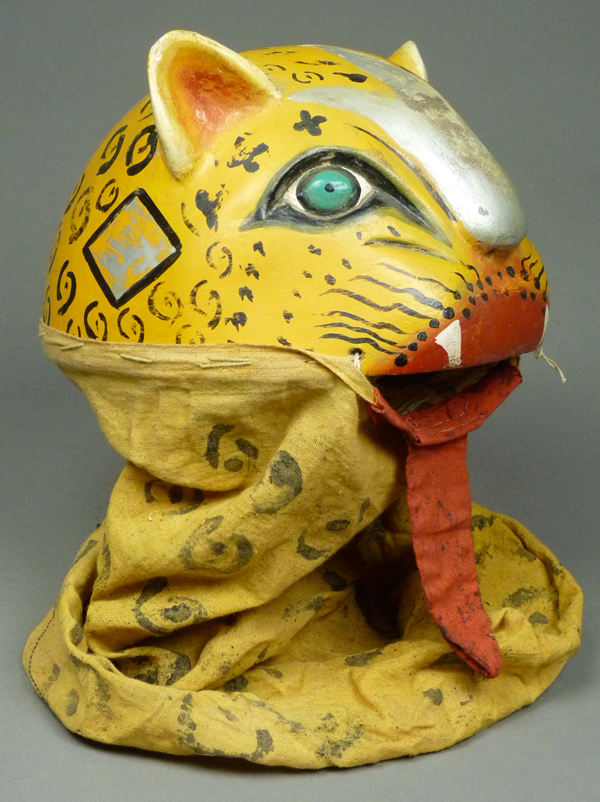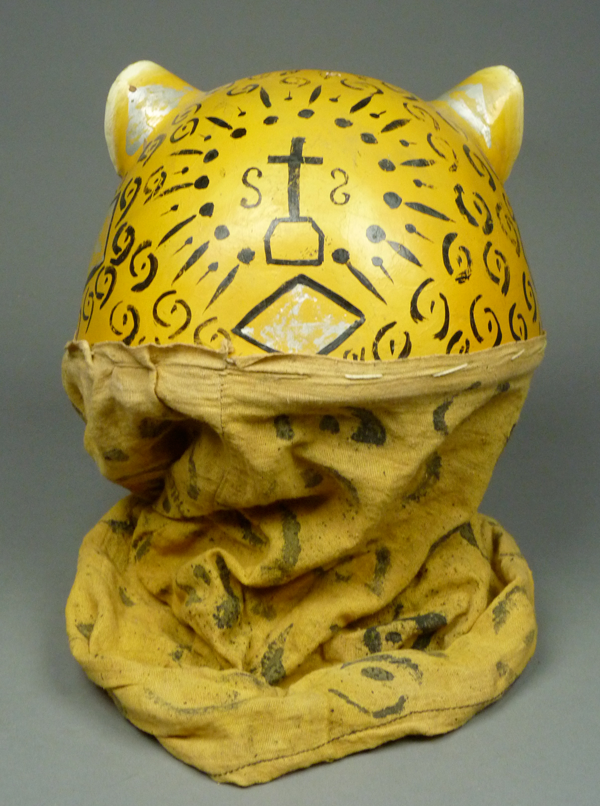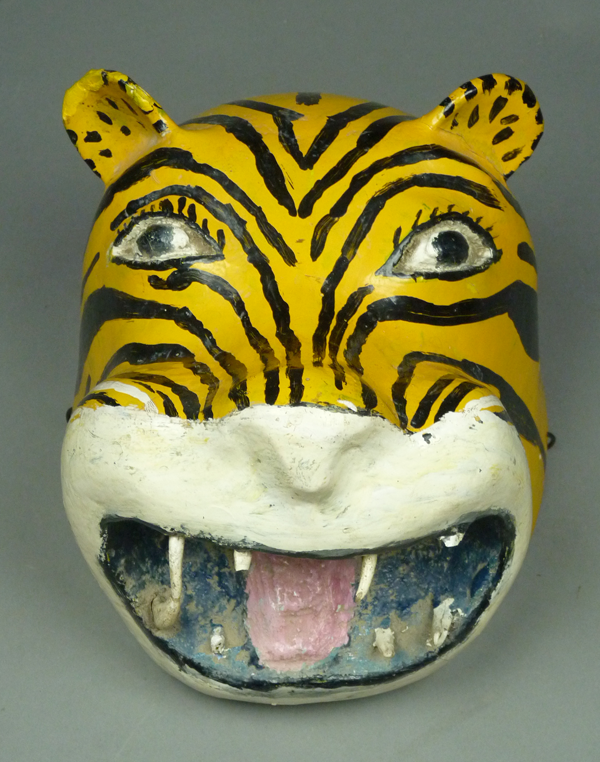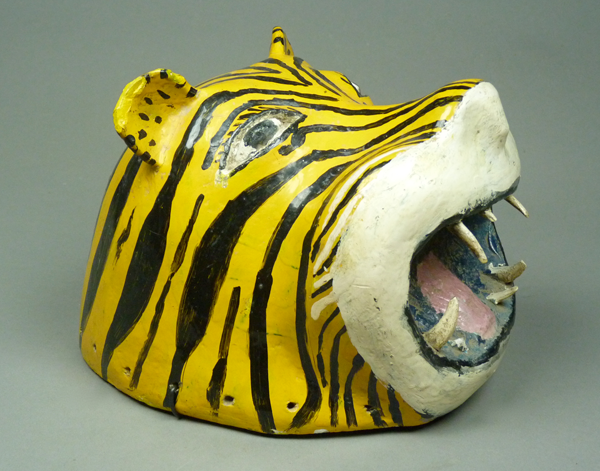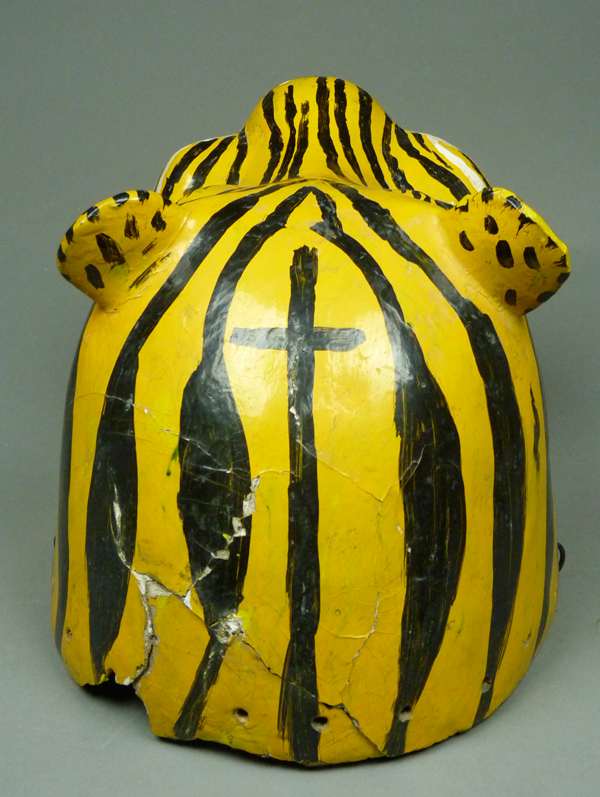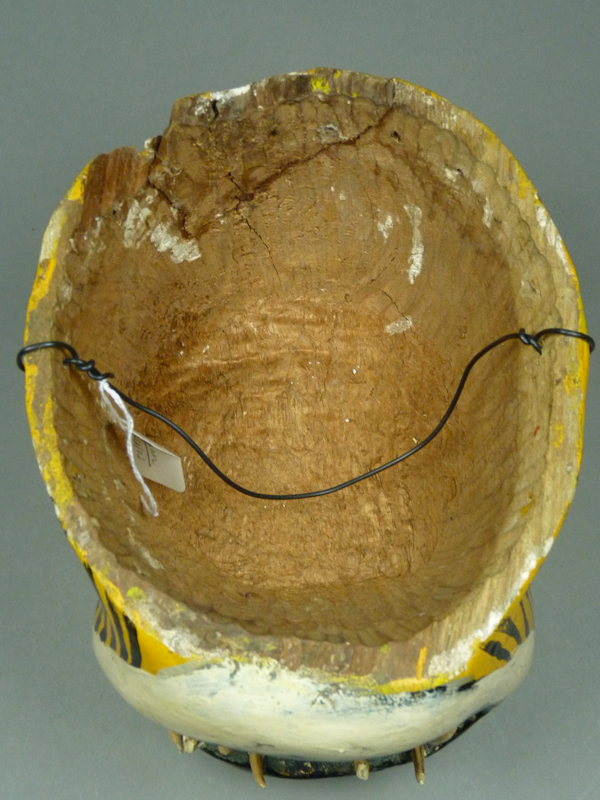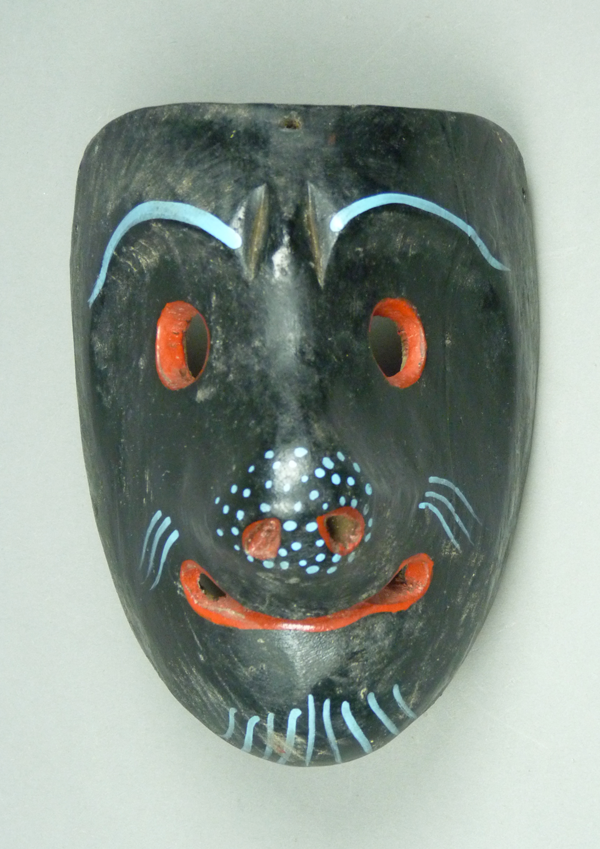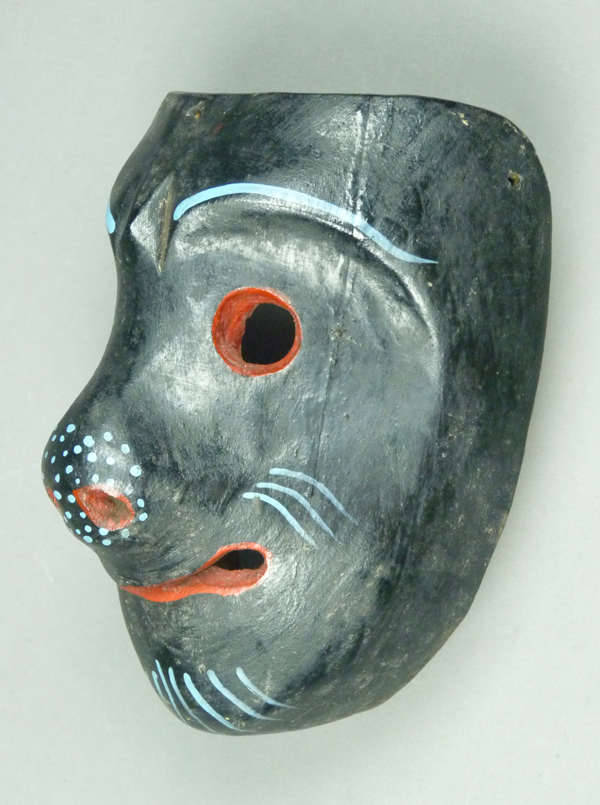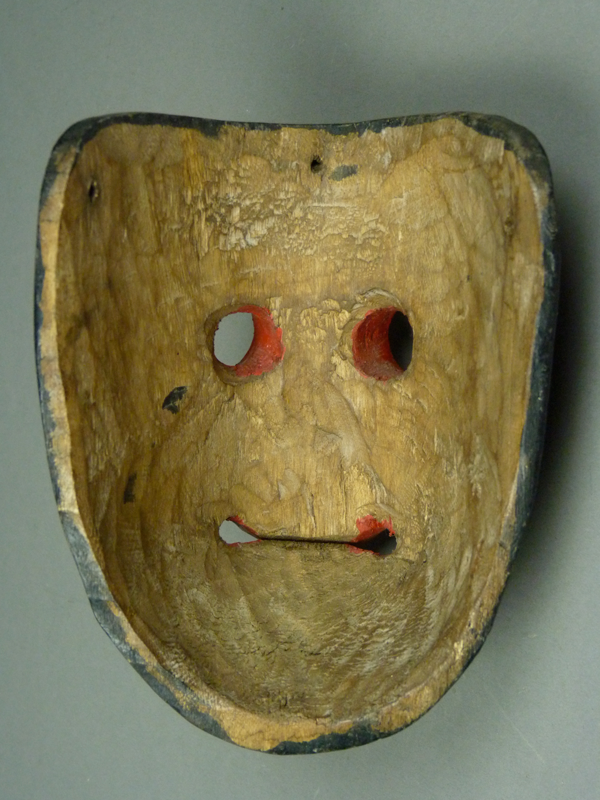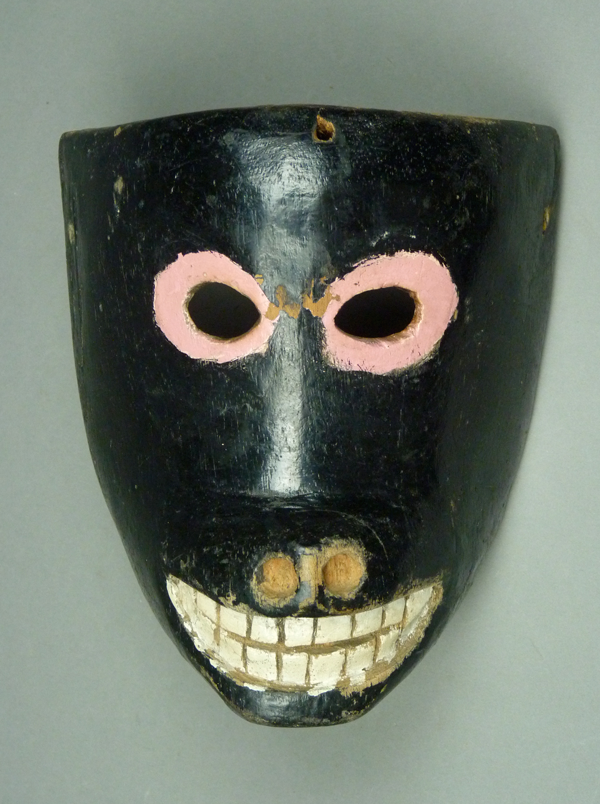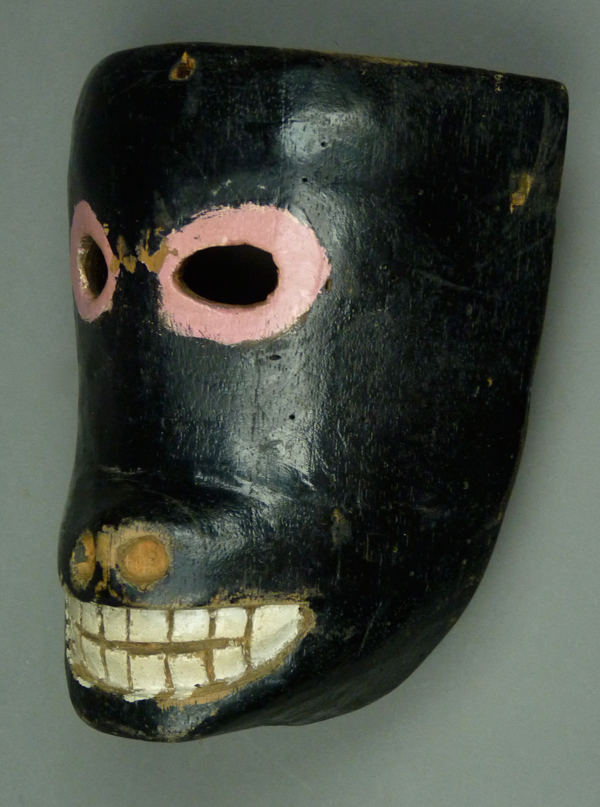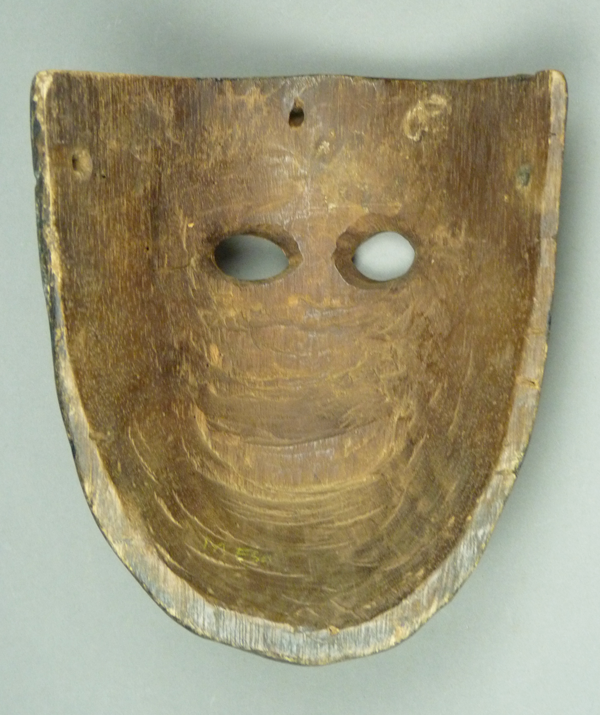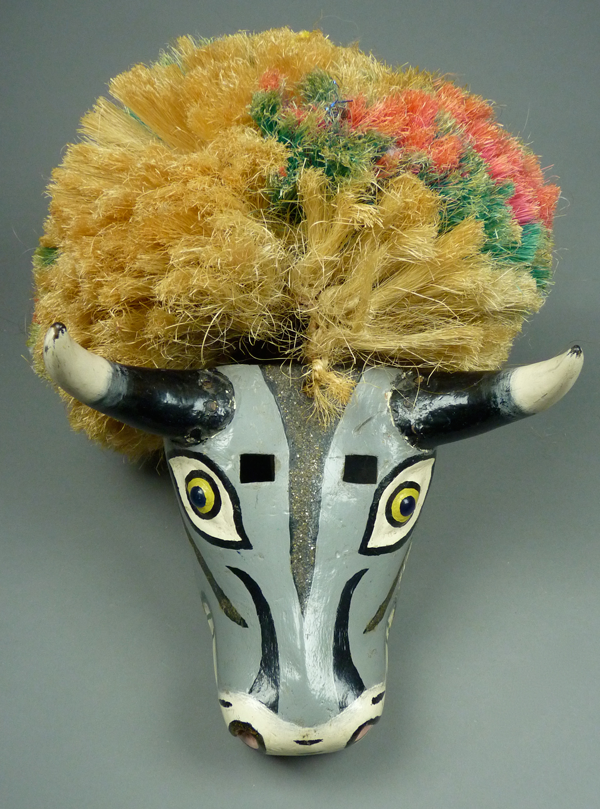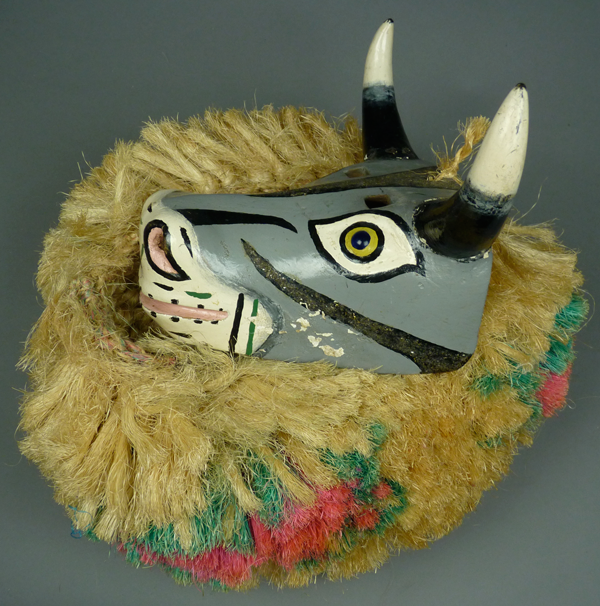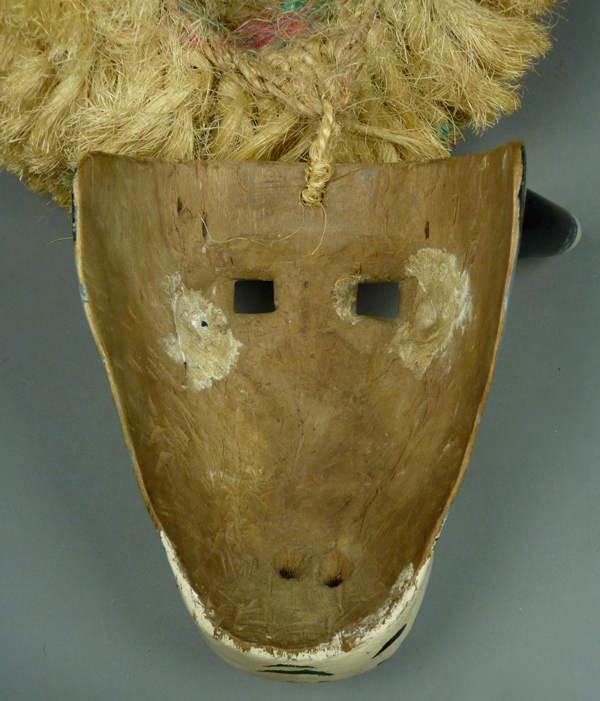Today I am going to discuss some additional masks from the Mexican state of Chiapas, along with the associated dances. We will examine Tigres (jaguars), Monitos or Changuitos (monkeys), and Toritos (bulls). In related video links you will also see Serpent and Kalalá (also spelled Calala) deer body masks. I will begin with the dance of the Tigres in Suchiapa, Chiapas. Here is one style of Tigre mask found there. It came to me with an original wire that was used to hang the mask from a hook when not in use. It would have been danced without the wire, of course.
This mask is 6 inches tall, 7½ inches wide, and 9½ inches deep. In Suchiapa almost all of the jaguar masks have cloth collars attached. The mask is worn on the top of the head like a cap. The dancer peers out at the world through a narrow gap between the chin of the mask and the top of the cloth collar. This gap is much easier to see on the next mask.
The Tigre dancers wear suits that function like coveralls. These are hand painted. The dancers often kneel during the action, so the suits have leather knee pads as well as leather soles.
On the back we see a Christian cross and a tail.
The next Tigre mask, which has the most typical style for Suchiapa, had come with this suit..
The sagging cloth above the cloth tongue provides an opening for the dancer’s vision.
This mask is 7 inches tall, 7½ inches wide, and 9½ inches deep, without the cloth collar.
The second Tigre mask has a cross painted on the back to match the cross on the back of the suit. Actually the first mask also has a simple cross on the back.
Here is a third Tigre mask from Suchiapa, Chiapas.
This mask is 5 inches tall, 8 inches wide, and 8½ inches deep.
The holes remain around the base of the mask to permit the attachment of the usual cloth collar.
The third Tigre mask also has a cross on the back. Apparently this is a necessary addition to every Tigre in this dance.
This Tigre was apparently broken during early use and some of the damage was repaired. It has only mild signs of wear, as if it had been retired early due to the damage, and then sold.
The Tigre dance in Suchiapa has been briefly described in Behind the Mask in Mexico (edited by Janet Brody Esser 1988, pages 307-311), along with some other dances. Chamulas, white faced clowns that are said to represent nearby Mayan speakers, attempt to grab the Tigres’ tails. The inhabitants of Suchiapa and Chiapa de Corzo are Zoque Indians. As you may recall from my earlier posts, Mexican Indian dances typically include stereotyped outsider figures, such as Chichimecas (as alleged barbarians), Africans, Caucasians, and in this case Chamulas, not necessarily to represent those peoples, but rather to create ambiguous characters who can introduce controversial or forbidden material with impunity, behaving in effect as sacred clowns.
The link that follows shows interviews with mask makers and performers in Suchiapa; these interviews are punctuated by commercials, but one can use the mouse to skip ahead. In the early part a step-in Kalalá (deer) is carefully constructed. At 11:48 one sees the Tigre masks. Near the end, at 27:30, all the elements come together for a community performance!
https://www.youtube.com/watch?v=4MG73LxD2oI
Here is a link showing the construction of the Serpent mask.
https://www.youtube.com/watch?v=O_i_Jer9eps
In a nearby town, San Fernando Chiapas, there is a second Tigre dance that is performed during Carnaval. This is an interesting variation, in which a seven year old boy wearing a mask with a monkey’s face must repeatedly provoke and then flee from a Tigre dancer. A number of other costumed but unmasked dancers function as his protectors, snatching him from the jaguar’s grasp at the last minute. Here is a Monito (little monkey) mask from San Fernando.
This mask has such an uncomplicated face but yet such an anxious expression.
The mask is 6 inches tall, 5 inches wide, and 3¾ inches deep.
The monkey mask has been danced for many years.
In the link that follows, you will be able to observe this dance in action in February 2015. The Monito is wearing a dark suit, a natty fedora hat, and a monkey mask, although the mask is generally difficult to see. He carries food that the Tigre snatches from him, first a tortilla and later bananas. If you freeze the action at 3:18 you will get a look at the monkey’s face. At the end of the dance the Monito is carried from the dance area on the Tigre’s back. I believe that this is a surviving Pre-Columbian dance! Therefore highly recommended.
https://www.youtube.com/watch?v=SRJ03Gi5fLs
In their scholarly paper, “El Carnaval de San Fernando, Chiapas: los motivos zoques de continuación milenaria,” Carolina Rivera Farfán and Thomas Lee Whiting (1990) described this dance as a surviving rite from a time before contact with Europeans. Here is a link to their text (in Spanish). Using the printer icon at the top of the PDF, one can print this document in its entirety after it has been opened, however my attempt to print specific pages failed.
http://repositorio.cesmeca.mx/bitstream/cesmeca/292/1/ANUARIO%201990%204.pdf
A second monkey mask follows. I suppose that it is used in the same dance, although it was obviously carved by a different carver and came identified only as from Chiapas, without the name of the town or dance.
This mask has an entirely different personality compared to the last Monito.
The second monkey mask is 7 inches tall, 6 inches wide, and 3 inches deep.
This mask too has been heavily danced.
In Suchiapa, some of the Parachicos dancers wear Torito (bull) masks and the dance is called Los Toritos and Parachicos. Here is a Torito (little bull) from Suchiapa, Chiapas. Note that the ixtle headdress is identical to that of the Parachicos dancers.
This mask is 8 inches tall, 6 inches wide, and 3½ inches deep.The distance between the tips of the horns is 9 inches.
The glass eyes are inlaid, as with the Parachicos masks.
The back shows significant wear.
In the link that follows one can see Parachicos dancing in Suchiapa, and at least one of the dancers is wearing a Torito mask. As in Chiapa de Corzo, the Parachicos have Caucasian faces. When you glimpse a black face among the dancers you are seeing a Torito mask. On very patient study you may notice that these black masks in the video have horns.
https://www.youtube.com/watch?v=KKICcxoNhXw
I hope that you found this interesting. For my part, I was thrilled to discover the recent video of the confrontation between the monkey and the jaguar. Next week, to celebrate the completion of one year of this blog (it began on July 7, 2014), I will devote the next two months or so to posts about the masks of Guatemala.


